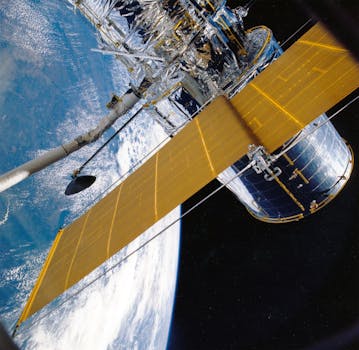
MEO Satellites: Revolutionizing Global Connectivity with Medium Earth Orbit Technology
MEO satellites, or Medium Earth Orbit satellites, are a type of satellite that operates at an altitude of around 2,000 to 36,000 kilometers above the Earth’s surface. This range is higher than Low Earth Orbit (LEO) satellites but lower than Geostationary Orbit (GEO) satellites. MEO satellites are designed to provide global coverage and are often used for navigation, communication, and weather forecasting purposes.
One of the primary advantages of MEO satellites is their ability to offer faster and more reliable connections compared to traditional GEO satellites. With a lower latency and higher throughput, MEO satellites are ideal for applications that require real-time communication, such as video conferencing, online gaming, and cloud computing. Additionally, MEO satellites can provide coverage to remote and underserved areas, bridging the digital divide and promoting global connectivity.
How MEO Satellites Work
MEO satellites work by orbiting the Earth at a speed of around 3.07 kilometers per second, which is faster than the rotation of the Earth. This allows them to cover a large area of the Earth’s surface and provide continuous coverage to a specific region. MEO satellites use a combination of antennas and transponders to receive and transmit signals, and they often employ advanced technologies such as beamforming and frequency reuse to maximize their capacity and efficiency.
MEO satellites are typically launched into orbit using a rocket, and they can be designed to operate for up to 15 years or more, depending on their mission and design. Once in orbit, MEO satellites use their onboard propulsion systems to maintain their position and altitude, and they can be controlled and monitored from the ground using specialized software and hardware.
Applications of MEO Satellites
MEO satellites have a wide range of applications, including navigation, communication, weather forecasting, and Earth observation. In the field of navigation, MEO satellites are used to provide location information and timing signals, which are essential for GPS and other satellite-based navigation systems. In communication, MEO satellites are used to provide broadband internet access, mobile phone coverage, and other telecommunications services.
MEO satellites are also used for weather forecasting and Earth observation, providing high-resolution images and data on atmospheric conditions, ocean currents, and land use. Additionally, MEO satellites are used for scientific research, such as studying the Earth’s climate, monitoring natural disasters, and tracking space weather.
Future of MEO Satellites
The future of MEO satellites looks promising, with ongoing advancements in technology and increasing demand for global connectivity. As the world becomes more interconnected, the need for fast, reliable, and ubiquitous communication services will continue to drive the growth of the MEO satellite industry. With the development of new constellations and the launch of new satellites, MEO technology is expected to play an even more critical role in shaping the future of global communication and navigation.